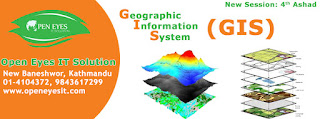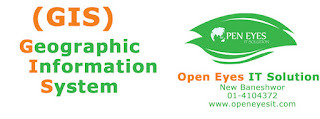 |
| GIS Training in Kathmandu Nepal |
This course teaches a standard workflow you can apply to any spatial analysis project. Working with a variety of ArcGIS tools and data, you will perform different types of analyses to efficiently create reliable results that support informed decision making. This course is taught using ArcGIS for Desktop Advanced and some course exercises use tools provided in the ArcGIS Spatial Analyst extension.
Performing Analysis Course Outline
Getting started with spatial analysis
Lesson introduction
What is spatial analysis?
Proximity analysis
Overlay analysis
Statistical analysis
Temporal analysis
The spatial analysis workflow
Exercise 1: Apply the spatial analysis workflow to solve a problem
Frame the question
Explore the data
Choose methods and tools
Perform the analysis
Examine the results
Share the results in a report
Lesson review
 |
| GIS Training in Kathmandu Nepal |
Planning and preparing for analysis
Lesson introduction
Planning for analysis
Analysis methods
Raster data considerations
Preparing points for raster analysis
Data quality
Standardizing spatial reference
Working with geoprocessing environments and documentation
Data preparation for raster analysis: Interpolation
Exercise 2: Prepare data for a site selection analysis
Explore the data
Create the study area boundary
Make environment settings
Clip the roads to the study area
Reduce extent of elevation raster to the study area
Convert zoning polygons to raster
Create a raster containing only agricultural zoning
Enhance the map's appearance
Lesson review
Performing proximity analysis
Lesson introduction
What is proximity analysis?
When to use proximity analysis
Categories of proximity analysis
How do ArcGIS tools measure proximity?
Buffering at a world scale
Data type and proximity analysis
Exercise 3: Use proximity analysis for emergency planning
Allocate resources to each school
Determine straight-line distances between hospitals and schools
Calculate flight times for air ambulances
Identify traffic control areas
Identify roads within each traffic control area
Lesson review
Performing overlay analysis with vector data
Lesson introduction
 |
| GIS Training in Kathmandu Nepal |
What is overlay analysis?
Overlay techniques
Performing overlay
Apportioning attributes
Overlay with Use Ratio Policy
Exercise 4: Use overlay analysis to assess risk of tornado damage
Explore the data
Determine critical facilities in the tornado path
Estimate road damage
Create a new model
Add an iterator
Make a feature layer
Overlay parcels with the tornado path
Add a field to store property loss
Calculate damage values
Summarize total property damage
Prepare the model to run as a tool
Run the model and view results
Share model as a geoprocessing package
Test the geoprocessing package
Lesson review
 |
| GIS Training in Kathmandu Nepal |
Performing overlay analysis with raster data
Lesson introduction
What is raster overlay?
Deriving surfaces from raster sources
Deriving rasters from vector sources
Locating a vineyard using raster overlay
Binary overlay analysis
Weighted overlay analysis
Weighted overlay workflow
A typical raster overlay question
Reclassification
Considerations for reclassification
Assigning weights
Exercise 5: Locate a vineyard using raster overlay
Open the map and explore data
Derive a slope surface from elevation
Derive a distance from highways surface
Examine raster cell values
Manually reclassify the elevation raster
Reclassify distance using remap file
Reclassify slope using remap file
Overlay rasters using Raster Calculator
Modify weights and rerun Raster Calculator
Use the Raster Calculator to combine cells ranked 4 and 5
Lesson review
Analyzing spatial patterns
Lesson introduction
What is a spatial pattern?
Exploring descriptive statistics
Mean center
Standard deviational ellipses
Working with data distributions
The Average Nearest Neighbor tool
The Spatial Autocorrelation tool
Hot spot analysis
Exploring patterns
Exercise 6: Analyze 911 incident distribution using spatial statistics
Explore the data
Run the Average Nearest Neighbor tool
Run the Spatial Autocorrelation tool
Perform hot spot analysis to aggregate incidents and locate hot spots
Perform hot spot analysis using a bounding polygon to set study area
Perform hot spot analysis on response times for 911 incidents
Lesson review
 |
| GIS Training in Kathmandu Nepal |
Analyzing temporal patterns
Lesson introduction
What is temporal analysis?
Working with time-aware data
Temporal analysis of piracy incidents
Temporal patterns and spatial statistics
Measuring statistics over time
Space-time analysis
Grouping analysis
Exercise 7A: Analyze temporal patterns in piracy data
Visually analyze patterns in the data
Use the time slider to analyze incidents by date
Analyze temporal patterns
Create time series animation
Exercise 7B: Space-time cluster analysis
Explore incident data
Aggregate incident data
Create a space-time window
Perform space-time hot spot analysis
Exercise 7C: Perform grouping analysis
Visually analyze 911 data
Run multivariate grouping analysis
Run grouping analysis by weekday
No comments:
Post a Comment